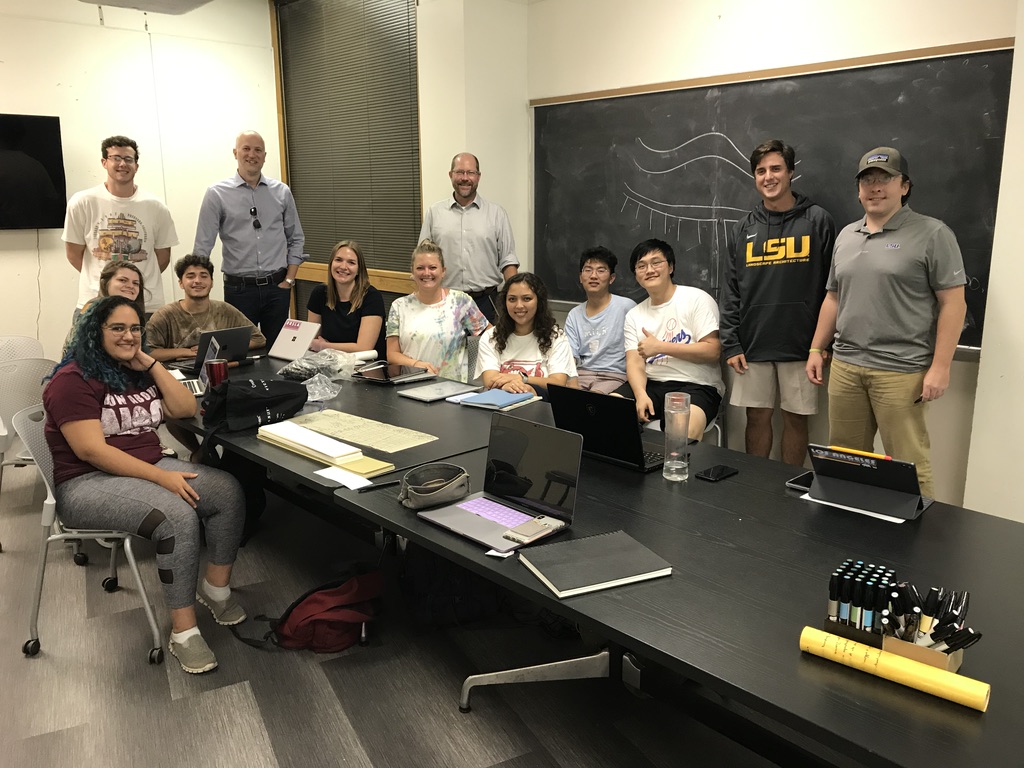How one course is developing communication skills to tackle an industry-wide problem

LA 4504 students with visitors from the American Society of Landscape Architects (Photo by Bruce Sharky)
Today’s landscape architect tackles everything from large-scale environmental issues like disaster recovery and stormwater management to quality of life challenges like developing healthy communities. Qualified graduates ready to solve these problems are in high demand, but the number of students earning landscape architecture degrees each semester is nowhere near meeting that need. One reason? Landscape Architecture Professor Bruce Sharky believes it can be attributed to current messaging about the profession failing to emphasize the ability of landscape architects to affect significant change in the world.
Eager to connect passionate young people with opportunities to make an impact, Sharky started brainstorming creative ways to address misconceptions and increase awareness about the profession while engaging future landscape architects to think critically about how to best communicate with different audiences. In Fall 2019 he offered LA 4504, a professional elective focused on recruiting the next generation of landscape architects.
“I pitched it as, ‘You can make a difference. You can be involved in your profession, and this is one way to think globally and act locally,’” Sharky says. “I thought three or four people would show up. But initially there were 14, which is significant for a small department.”
This small department is part of the College of Art & Design, where the majority of studio courses integrate communication into the framework through visual design and in-class critiques. For Sharky, visual design is but one of many important elements to success, which is why he embeds other forms of communication practice into his course.
“Writing is probably the most important professional skill, even more important than designing,” Sharky says. “And being an effective public speaker is something they are going to have to do in their career, whether it's recruiting students or presenting their work to stakeholders or their client.”
As part of their communication skills development, students created pitch decks strategically tailored to an audience with significant recruiting potential: high school students. These included examples of local projects to help make recognizable connections, personas to showcase the diverse interests of landscape architects, and specialized content, like visual art or technical drawing, highlighting how current coursework translates into real-world experience.
Prior to visiting each high school, students presented final drafts to peers, professionals in the field, and the CxC team, using that feedback to refine their pitches. Through this, they were able to assess any blind spots they might not have considered, while gaining insight into ways to further develop persuasive oral communication before entering the high school classroom.
While measurable results of recruiting future landscape architects through this course remain to be seen, Sharky is optimistic that this could serve as a successful model for both students and professionals seeking to bring in new audiences while expanding awareness of landscape architecture’s full scope.
“Through the course, we really try to understand who our audience is and show how landscape architecture will allow their work to be significant.” Sharky says. “It has the potential to make a huge impact.”
Is your C-I course geared toward solving a problem in your industry? Are you using C-I methods in a creative way? Tell us about it at cxc@lsu.edu.